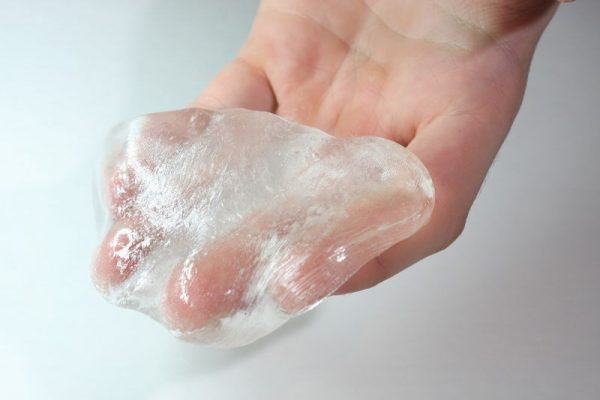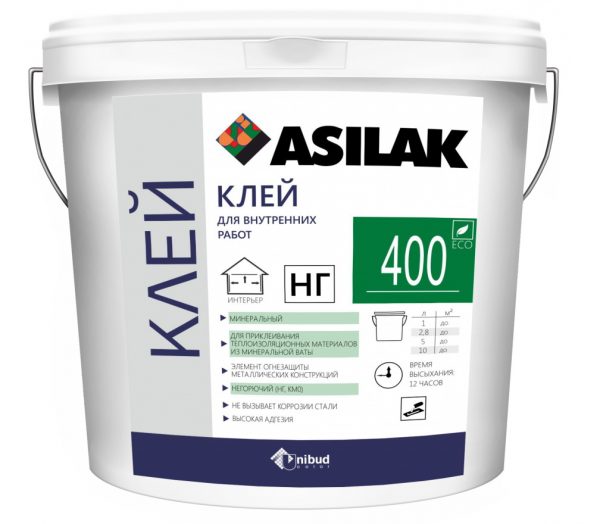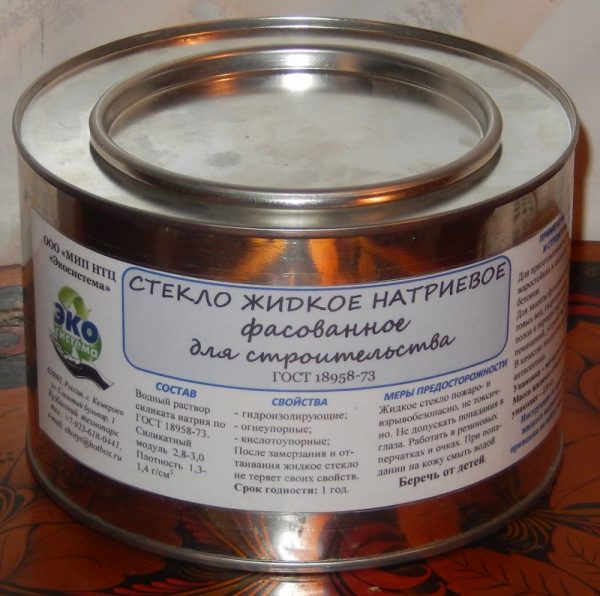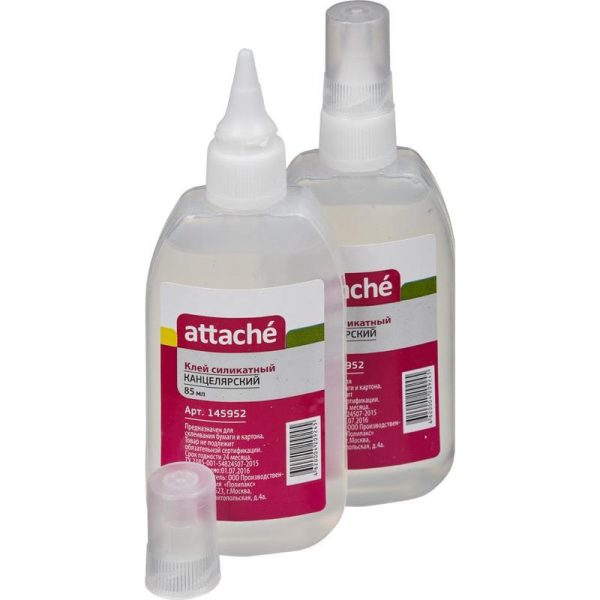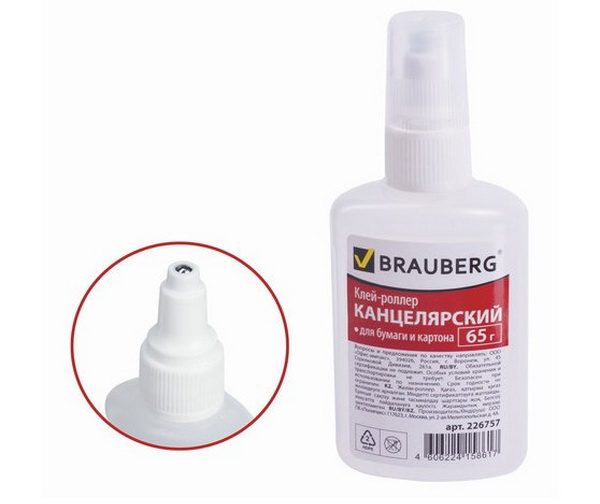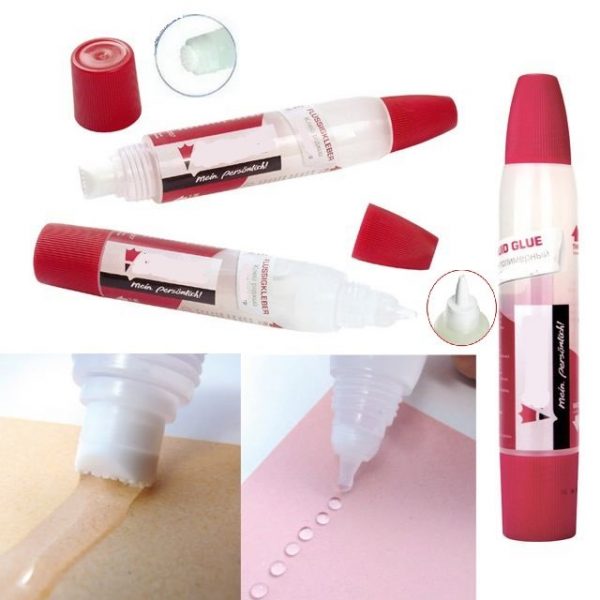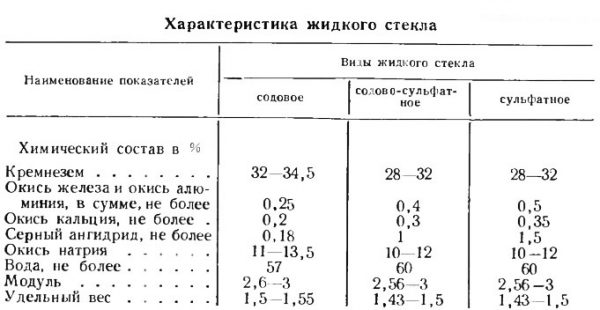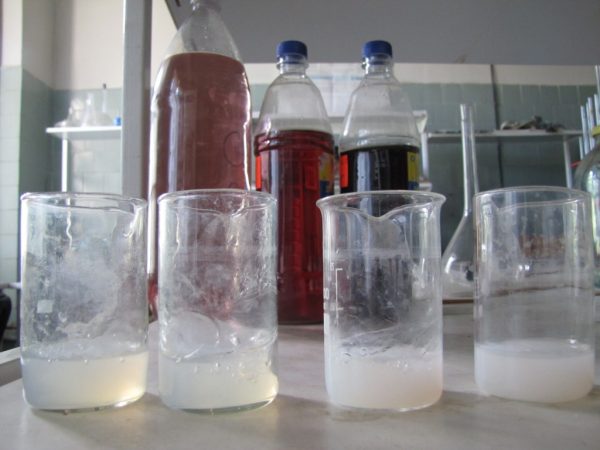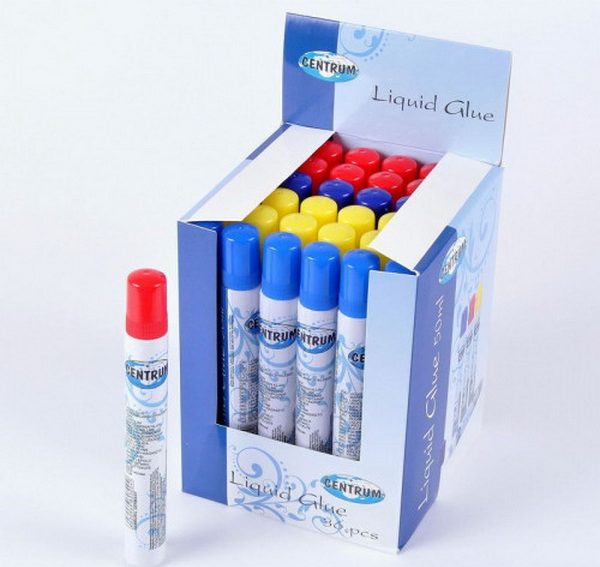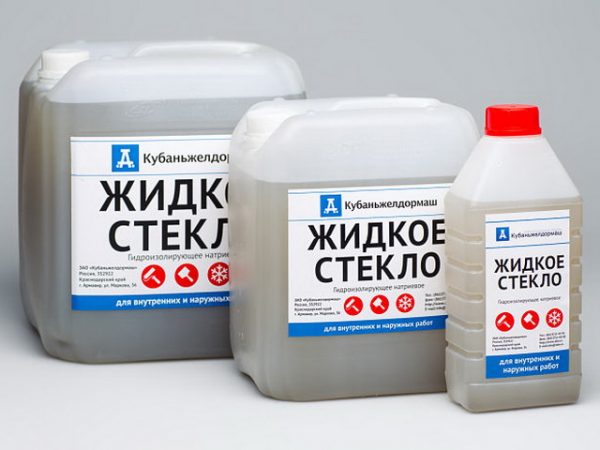Silicate glue is an unusual tool that has other names: liquid glass and clerical glue. Initially, it was created as office (paper) glue, but later gained wider application and even became a part of various construction mixtures. This glue has many advantages, but it must be used correctly, in accordance with the instructions.
- Adhesive Features
- Application area
- Types of stationery glue
- Glue composition
- Packaging forms
- Advantages and disadvantages
- Technical specifications
- How to make glue with your own hands - instructions
- Terms of use
- Adhesive Manufacturers
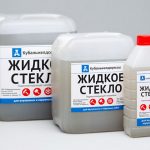
Adhesive Features
Liquid glass is an alkaline aqueous solution of silica - vitreous silicates. It was first created back in the early 19th century in Germany by chemist Jan Nepomuk von Fuchs. It was not difficult to organize the production of glue, because silicates are widespread in nature, their production does not incur any special costs. That is why silicate glue is sold everywhere and is inexpensive.
What does liquid glass look like? It differs from simple window glass not only in physical form, but also in color - it has a light yellow-greenish tint. The glue is quite dense, transparent, jelly-like in non-frozen form. The mass is homogeneous, normally does not contain foreign particles. Silicate glue according to OKPD 2 is included in group “Glues” 220.52.10, produced in accordance with GOST 13078-81.
Production Technologies:
- melting quartz sand with baking soda;
- compound of silicates with lithium, potassium, sodium hydroxide.
How much glue dries? It is not difficult to determine complete drying, it occurs in about a day, although the initial solidification lasts 10 minutes. Curing time varies depending on the addition of other chemical components or the introduction of glue in the building mixture. Clerical glue has a special composition that quickly penetrates into solid and porous materials, gives off moisture and increases the density of the product. Other glue features:
- when foaming, it ceases to conduct heat, therefore it is used to create heat-saving materials;
- withstands heating to very high temperatures, for some brands the limit is more than + 1000 degrees;
- does not deteriorate with temperature changes, even with quick and sharp changes;
- possesses fire-fighting properties - non-combustible, part of refractory materials.
Application area
Glue is widely used in domestic and industrial applications. Like office glue, it is used for gluing paper, cardboard, it is bought at offices, post offices. Why is it needed at home? Silica glue, oddly enough, will help clean burnt dishes. To do this, pour it into water and boil a pot, a frying pan in a solution, and then easily remove carbon deposits.
At a construction site, the tool is indispensable: it makes an excellent mortar for pouring the foundation, mixing with a cement-sand mass. This seriously increases the speed of solidification and the quality of the finished structure. Especially often reinforce foundations and screeds with sodium compounds, they are also used for refractory processing of materials. Potassium adhesives are resistant to aggressive environmental conditions, therefore they are suitable for the production of protective coatings.
Other areas of glue application:
- the introduction of building antiseptics to give anti-mold properties;
- installation of waterproofing coatings inside residential and non-residential buildings;
- increasing the moisture resistance of joints, joints, bases, protecting them from deformation;
- treatment of basements and socles against groundwater leakage, application to the walls of pools and wells to protect against leakage;
- gluing tiles, creating mosaic paintings;
- installation of false ceilings;
- repair of bathrooms, showers, baths, saunas;
- pipe and furnace processing;
- manufacture of plaster, primer;
- Strengthening the adhesion of other building adhesives.
In metallurgy, glue is combined with a spraying composition for electrodes, which are further used in welding. In mechanical engineering, many parts are glued together with liquid glass. In the textile and paper industries, materials are impregnated with glue to give them shine and hardness. Liquid glass can be part of detergents, many products of the chemical industry. Furniture makers cover tables, cabinets, and other products with silicates. Still glue is used for:
- repair, installation of pipelines as a sealant;
- drawing on a car body, other equipment;
- glossing over wounds, cracks in trees.
Types of stationery glue
The group of stationery adhesives includes not only the liquid silicate composition described above. It also includes ordinary PVA, as well as glue sticks. PVA is an emulsion of polyvinyl acetate in water, to which plasticizers and other additives are added. PVA is not toxic, is widely used in creativity. The most popular brands are:
- Berlingo;
- Brauberg;
- Officespace
- Elmers
- Attache
By sticky pencil is meant solid glue in a rotary tube. It is convenient to use it from the open part of the tube without getting your fingers dirty. You can use pencils as a substitute for office glue. Here are the famous brands:
- Erich Krause;
- Attomex
- Hatber
- "Centrum".
Glue composition
The chemical formula of the glue is quite complex. It will depend on the type of the main component - it can be potassium or sodium silicate, rarely lithium. These substances also give sticky properties to liquid glass. The molten oxides of sodium, potassium, lithium with silicon in an aqueous medium form polynomial bonds, where the molecules of the metal oxide are surrounded by molecules of non-metals. Also, some manufacturers include flavoring agents in the glue to give a pleasant smell.
to contents ↑Packaging forms
Stationery glue is poured into different packaging. A liquid product is packaged in bottles, the difference of which from each other in appearance, volume, cap shape. The latter can be ordinary, as well as in the form of a super-cap - a narrow, unscrewing cap, elongated upward with a spout, with which the glue is applied.
Some brands produce silica glue bottles equipped with a convenient brush cap. To use it, no other devices will be required, you will not need to think about how to wash the tools. Also, in a bottle with liquid glass, there are duck caps, they are wider than super caps and have a large opening. Still on sale there are liquid glue-scooters equipped with a deodorant-type roller, and glue-sprays.
to contents ↑The solid form (glue stick) is represented by the actual roller-pencil. Among the novelties among the forms of stationery glue, a spider ribbon should be indicated, which is used for gluing fabric, leather, and applique gluing. The tape is activated after warming with an iron.
Advantages and disadvantages
The tool has many positive aspects, although it is considered by many to be a relic of the past, because the stores offer an extensive assortment of more modern adhesives. The advantages of the composition are as follows:
- universality - suitability not only for gluing different surfaces, but also for impregnation of fabrics, paper, wood, leather;
- bonding even dissimilar materials;
- quick drying;
- excellent heat resistance, fire resistance;
- environmental friendliness of the composition;
- resistance to destruction from the action of environmental factors, temperature extremes;
- rust prevention on metals;
- deep penetration, penetration even into the smallest cracks, crevices, pits;
- lack of need for special tools for drawing (roller, glue gun, etc.);
- lack of reproduction of fungus, bacteria, mold.
The glue is easy to use and affordable for the user, one of the lowest among analogues. You can remove the stain of the product from the fabric by ordinary washing. Unfortunately, silicate glue also has many disadvantages:
- rapid curing in air - if you do not close the bottle tightly, the glue will become unusable;
- crystallization of the composition over time, its yellowing, damage to the paper due to this feature;
- reaction to contact with a number of chemicals with the risk of surface damage;
- unsuitable for impregnation of substrates going under painting due to the formation of a slippery film.
It is possible to glue the paper glued with glue before it dries, but it will be saturated with it and then deformed, especially when applying a thick layer. Liquid glass has a strongly alkaline reaction, therefore, with careless use it can cause skin burns. Glue is very dangerous for the eyes, and children are allowed to use only its harmless variety - PVA.
to contents ↑Technical specifications
Below are the main technical characteristics of the adhesive according to GOST:
- appearance - a thick liquid of a yellowish or slightly greenish color, which does not have inclusions and impurities distinguishable to the eye;
- density - 1.36-1.45 g / cubic centimeter;
- mass fraction of insoluble substances - 0.2%;
- shelf life in factory unopened containers - 2 years;
- the possibility of freezing / thawing is allowed.
The operating temperature of the insulating layer created on the basis of glue is 1300 degrees.
to contents ↑How to make glue with your own hands - instructions
Despite the cheapness, liquid glass can not be bought, but made independently. Usually, craftsmen or those who have access to the components do this, and the remedy is required in large quantities. Silicic acid, potassium and sodium silicates in the finished form will be needed. The procedure is as follows:
- combine metal silicates in equal parts;
- take a 10% acid solution or dilute the substance to the desired strength yourself;
- add acid to silicates so that the mass is covered with a liquid;
- put the mixture on fire, cook at a slow boil for 10 minutes, do not forget to constantly stir;
- cool the finished glue, pour into tightly twisted packaging.
When cooking, you need to wear safety glasses and gloves. You can’t use cookware for this purpose, it’s better to take one that is not a pity to throw it away.
to contents ↑Terms of use
Silicate glue is most conveniently applied with a brush, spray gun. The latter method not only facilitates the work, but also reduces the cost of the product due to the uniformity of the adhesive joint. In industry, some parts are coated with liquid glass by dipping.
Features of the use of the composition are as follows:
- degrease all surfaces well, clean from dirt, dust;
- the base should be flat, smooth;
- if necessary, prime the products 1-2 times, allow the soil to completely dry;
- apply a layer of glue, without drops and drips, without missing sections;
- if the dimensions of the product are significant, apply a second layer of glue after some drying of the first and only then hold the bond;
- Leave the product to dry completely without moving, touching.
If plaster or cement mixture is being prepared for pouring, the adhesive composition is introduced into it in a volume of 25% of the total mass. First cement-sand mixture is diluted, and only then liquid glass is added to it. To make an antiseptic coating, silicate glue 1: 1 is poured into the primer, after which the product is applied to the walls, floor, and ceiling.
to contents ↑Adhesive Manufacturers
There are not too many brands on sale that continue to produce silicate adhesives. Most often on the market you can find the products of the company "Oksium", which produces sodium liquid glass. The glue is also created by Silikat (St. Petersburg), it is packaged in different packaging for use in everyday life and in production. In addition, Stekloprodukt makes the glue, but you can find only large-sized industrial forms in it. The company produces liquid glue in small bottles, scooters, and sprays:
- Attache
- Kores;
- Erich Krause;
- Office Space;
- Brauberg;
- "Centrum";
- Berlingo.
Silicate adhesives are inexpensive and practical. Used by humans for almost 200 years and remain a popular adhesive. Of course, they were significantly ousted from the market by better compositions, but they are still produced due to the reliability and stability of the result.

